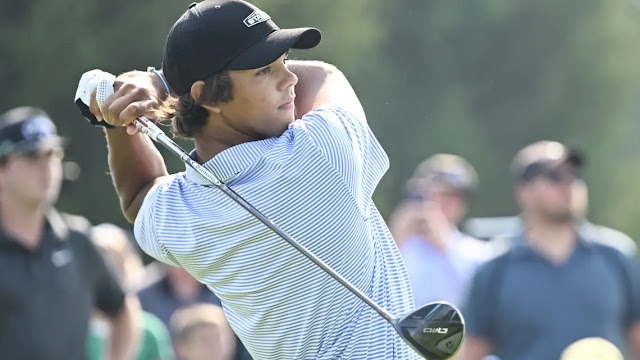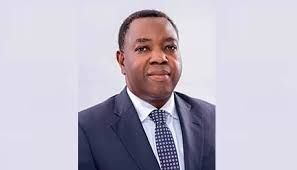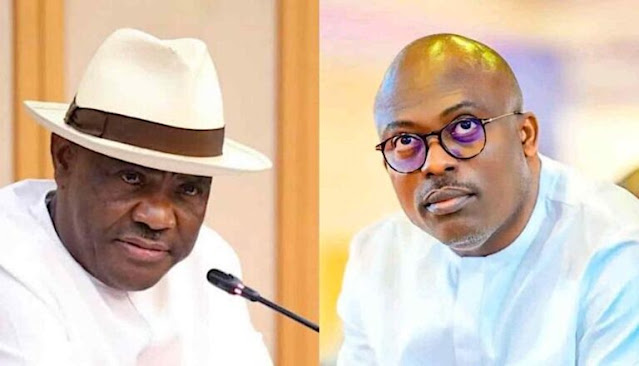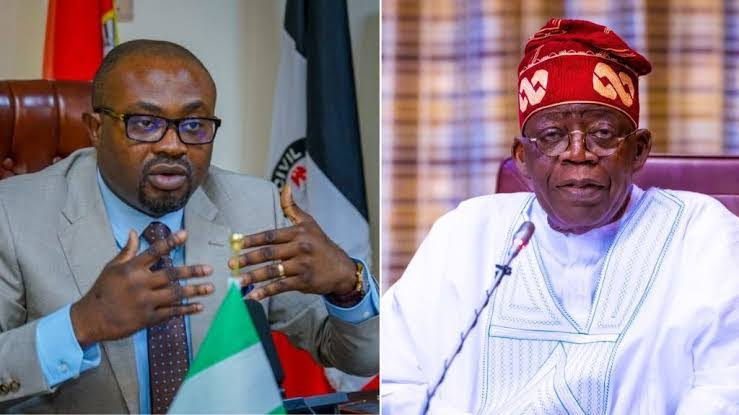On Sunday, August 31, 2025, the golf world witnessed a moment of magic at TPC Sawgrass, the iconic home of The Players Championship. Charlie Woods, the 16-year-old son of golf legend Tiger Woods, etched his name into the sport’s history books by firing a hole-in-one at the par-three third hole during the final round of the Junior Players Championship. The ace, achieved at the 177-yard hole on the famed Stadium Course, was a highlight of an otherwise challenging tournament for the young golfer, who finished just outside the top 30 in a competitive 78-player field. For Charlie, the moment was not just a personal triumph but a symbolic milestone, as it occurred at the same venue where his father secured two of his most celebrated victories in 2001 and 2013. This article delves into the details of Charlie’s achievement, the context of his performance at the Junior Players Championship, the pressures of following in his father’s footsteps, and what this moment means for his promising career in golf.
The Ace That Stole the Show
The Junior Players Championship, held annually at TPC Sawgrass in Ponte Vedra Beach, Florida, is one of the most prestigious events in junior golf. The tournament attracts the top 58 boys from the Rolex AJGA Rankings, along with international qualifiers, making it a proving ground for the sport’s next generation. For Charlie Woods, the 2025 edition was a chance to showcase his talent on a stage steeped in history—a course synonymous with his father’s legacy.
Charlie’s final round began on the 10th tee of the Stadium Course, a layout renowned for its challenging design, including the infamous par-three 17th “Island Green.” After a mixed performance over the first two rounds, where he carded scores of 76 and 75 to sit at seven-over-par and 14 shots off the lead, Charlie was out of contention for the title. However, his focus remained on finishing strong and climbing the leaderboard. What transpired on the third hole—his 12th hole of the day—would become the defining moment of his tournament.
The par-three third at TPC Sawgrass, measuring 177 yards, is a demanding hole that requires precision and nerve. With water guarding the front and bunkers flanking the green, it’s a test of both skill and mental fortitude. Charlie, wielding a 7-iron, stepped up to the tee and delivered a shot that was nothing short of spectacular. The ball soared through the air, landing softly on the green and rolling directly into the cup for a hole-in-one. The gallery erupted in applause, and Charlie, momentarily unsure if the ball had found the hole, was met with confirmation through the crowd’s reaction. The moment was captured on video by the American Junior Golf Association (AJGA) and quickly spread across social media, drawing praise from fans and analysts alike.
Charlie’s celebration was understated, a nod to his reserved demeanor on the course. Unlike his father, who has been known to ignite crowds with fist pumps and roars, Charlie shared a muted exchange with his playing partners, a reflection of his focus amid the excitement. The ace marked his second career hole-in-one, following a similar feat at the 2024 PNC Championship, where he played alongside Tiger. That earlier ace, also struck with a 7-iron from a near-identical distance, highlighted Charlie’s growing proficiency with his irons and his ability to perform under pressure.
A Tournament of Highs and Lows
While the hole-in-one was the headline-grabbing moment, Charlie’s overall performance at the Junior Players Championship told a broader story of resilience and growth. Entering the final round tied for 43rd in a field of 77 players, Charlie faced an uphill battle to make a significant move up the leaderboard. His first two rounds had been inconsistent, with flashes of brilliance overshadowed by costly mistakes. A four-over 76 in the opening round and a three-over 75 in the second left him well behind the leader, Miles Russell, who ultimately won the tournament with a nine-under 207.
The final round was a microcosm of Charlie’s tournament: a blend of brilliance and frustration. Starting on the 10th tee, he mixed three birdies with three bogeys over his first 11 holes, playing even-par golf for the day. The ace on the third hole provided a surge of momentum, but the euphoria was short-lived. On the very next hole, the par-four fourth, Charlie ran up a double-bogey six, giving back the two strokes gained from the hole-in-one. A bogey on the fifth followed, pushing him to three-over for the round. However, Charlie showed his mettle by clawing back with a birdie on the sixth and a strong finish, parring his final holes, including the treacherous 17th, to card a level-par 72—his best score of the week.
The final tally of seven-over-par placed Charlie just outside the top 30, a respectable but not exceptional result in a field stacked with elite junior talent. Miles Russell’s victory, sealed with a two-under 70 in the final round, underscored the depth of competition Charlie faced. Yet, the hole-in-one ensured that Charlie left TPC Sawgrass with a lasting memory, one that transcended his overall standing in the tournament. As Golf Monthly noted, “The 2025 Junior Players Championship did not quite pan out as Charlie Woods might have hoped overall, but the promising teenager did at least take an awesome memory away with him.”
The Weight of the Woods Name
Charlie Woods’ journey in golf is inseparable from the legacy of his father, Tiger Woods, widely regarded as one of the greatest golfers of all time. Tiger’s resume—15 major championships, 82 PGA Tour victories, and two wins at TPC Sawgrass (2001 and 2013)—casts a long shadow over Charlie’s career. The hole-in-one at the third hole was particularly poignant because it was a feat Tiger has never accomplished in competition at TPC Sawgrass. As Golfmagic reported, “Charlie Woods achieved a feat that his famous father, Tiger, has never accomplished as he made a hole-in-one in competition at the iconic TPC Sawgrass in Florida.”
The comparison between father and son is inevitable but complex. Charlie, at 16, is still developing his game and identity as a golfer. His swing, demeanor, and competitive spirit bear similarities to Tiger’s, but he is carving his own path. The Junior Players Championship was a testament to this duality: Charlie showcased moments of brilliance that echoed his father’s precision, yet he also displayed the inconsistency typical of a young player navigating the pressures of high-level competition.
The weight of the Woods name brings both opportunity and scrutiny. Charlie’s performances are dissected by fans, media, and analysts eager to see if he can emulate his father’s success. Every shot, every tournament, and every milestone—like the hole-in-one at TPC Sawgrass—is viewed through the lens of Tiger’s legacy. This scrutiny can be a double-edged sword. On one hand, it provides Charlie with unparalleled exposure and access to elite coaching, facilities, and opportunities, such as his qualification for the Junior Players Championship through his victory at the Team TaylorMade Invitational in May 2025. On the other hand, it places immense pressure on a teenager still finding his footing in a demanding sport.
Charlie’s coach at the Benjamin School, Toby Harbeck, has emphasized the professionalism with which Charlie approaches competition. “He’s not just showing up and swinging,” Harbeck noted, highlighting Charlie’s dedication and discipline. This work ethic, combined with his natural talent, suggests that Charlie has the tools to succeed, but the path to greatness is fraught with challenges, particularly when every move is compared to one of the sport’s most iconic figures.
Charlie’s Emerging Career: A Star in the Making?
Charlie Woods’ hole-in-one at TPC Sawgrass is the latest milestone in a junior golf career that is gaining momentum. Born in 2009, Charlie was introduced to golf at a young age, often seen caddying for his father or competing in junior events. His first major exposure came at the 2020 PNC Championship, where he and Tiger played together, captivating audiences with their chemistry and Charlie’s precocious talent. Since then, Charlie has steadily built his resume, competing in high-profile junior tournaments and earning accolades for his performances.
In 2024, Charlie made headlines with a top-10 finish at the Junior PGA Championship, a sign of his growing consistency. His victory at the Team TaylorMade Invitational earlier in 2025 secured his spot in the Junior Players Championship, placing him among the elite of junior golf. These achievements, coupled with his second career hole-in-one, underscore his potential to become a significant figure in the sport.
Charlie’s game is still a work in progress, but there are clear strengths that set him apart. His iron play, as demonstrated by the ace at TPC Sawgrass, is a standout feature. The ability to hit a 7-iron 177 yards with pinpoint accuracy speaks to his technical skill and composure under pressure. His swing, often compared to Tiger’s for its fluidity and power, is another asset, though he is still refining his consistency across all facets of the game.
Areas for improvement include his short game and mental resilience. The double-bogey and bogey immediately following the hole-in-one suggest that Charlie is still learning to manage the emotional highs and lows of competitive golf. These lapses are not uncommon for a 16-year-old, but they highlight the importance of experience and maturity in navigating the ups and downs of a 72-hole tournament. As Charlie continues to compete, he will likely develop the mental toughness needed to handle the pressure of elite competition.
TPC Sawgrass: A Stage Steeped in History
The significance of Charlie’s hole-in-one is amplified by the venue: TPC Sawgrass’ Stadium Course, one of the most revered layouts in golf. Designed by Pete Dye, the course is known for its strategic challenges, including narrow fairways, punishing bunkers, and water hazards that demand precision. The par-three 17th, with its island green, is the course’s signature hole, but the third hole, where Charlie made his ace, is no less demanding. At 177 yards, it requires a well-struck shot to avoid the water and bunkers, making Charlie’s achievement all the more impressive.
TPC Sawgrass is also deeply tied to Tiger Woods’ legacy. Tiger’s victories at The Players Championship in 2001 and 2013 are among the defining moments of his career. In 2001, he outdueled Vijay Singh to claim the title, solidifying his status as the world’s best player. In 2013, he held off Sergio Meldrick Blixt and Sergio Garcia in a dramatic finish, showcasing his resilience and competitive fire. For Charlie to make a hole-in-one at this venue, on a course where his father achieved such glory, adds a layer of symbolism to the moment.
The fact that Charlie accomplished something Tiger never did—a competitive hole-in-one at TPC Sawgrass—adds an intriguing twist to the narrative. While Tiger has 20 career holes-in-ones, none came at this iconic venue in a professional or competitive setting. Charlie’s ace, therefore, is a unique feather in his cap, a moment he can claim as his own in the shadow of his father’s towering legacy.
The Pressure of Expectation: Navigating the Spotlight
Being the son of Tiger Woods comes with extraordinary expectations. Every tournament Charlie plays is scrutinized not only for his performance but also for how it measures up to his father’s achievements at a similar age. Tiger was a prodigy, winning the U.S. Junior Amateur at 15 and becoming the youngest U.S. Amateur champion at 18. His meteoric rise set a benchmark that few, if any, can match. For Charlie, the comparisons are unavoidable, but they also present an opportunity to forge his own identity.
The media attention surrounding Charlie’s hole-in-one illustrates the intensity of the spotlight. Outlets like ESPN, Golf.com, and Yahoo Sports covered the event extensively, with headlines emphasizing the connection to Tiger. While this attention can boost Charlie’s profile, it also amplifies the pressure to perform consistently. A single mistake, such as the double-bogey on the fourth hole, can overshadow his brilliance in the eyes of critics, even if it’s a natural part of a young player’s development.
Charlie’s ability to handle this pressure will be crucial to his success. His reserved reaction to the hole-in-one suggests a level-headed approach, but the emotional swings of the final round indicate that he is still learning to manage the mental demands of the game. Working with a sports psychologist or a coach who specializes in mental conditioning could help Charlie develop the resilience needed to thrive in the spotlight.
The Future of Charlie Woods
At 16, Charlie Woods is at the beginning of what could be a remarkable career. His performance at the Junior Players Championship, while not a victory, demonstrated his potential to compete at the highest levels of junior golf. The hole-in-one was a statement of his talent, but his overall game—marked by flashes of brilliance and moments of inconsistency—reflects the journey of a young player still honing his craft.
The next few years will be pivotal for Charlie’s development. As he transitions from junior to amateur and potentially professional golf, he will face increasingly tough competition and higher stakes. His physical development is also a factor; at 16, he is still growing into his frame, and added strength could enhance his driving distance and overall game.







